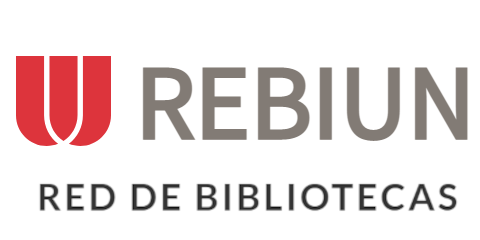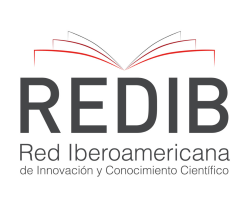Impacto de la implementación de Speech Ace mediante el enfoque CALL como herramienta para mejorar la pronunciación de las vocales como parte de la habilidad oral en estudiantes de quinto grado que aprenden inglés como segundo idioma en la escuela José Joa
Resumen
Este estudio investiga cómo la integración de la plataforma Speech Ace y el enfoque de Aprendizaje de Idiomas Asistido por Computadora (CALL) puede mejorar la pronunciación de las vocales en inglés y las habilidades de comunicación oral de estudiantes de quinto grado de la Escuela José Joaquín Mora Porras, quienes han enfrentado desafíos de aprendizaje tras las interrupciones provocadas por la pandemia de COVID-19. Mediante la implementación de herramientas digitales, se busca incrementar la participación y la confianza de los estudiantes al hablar inglés como segunda lengua, apoyando su progreso en la pronunciación y fluidez mediante una práctica oral más frecuente y el desarrollo de habilidades comunicativas efectivas. En línea con los objetivos bilingües del Ministerio de Educación Pública de Costa Rica, la investigación resalta el valor de los recursos tecnológicos para fomentar un entorno de aprendizaje dinámico y centrado en el estudiante. Los resultados indican una mejora notable en la pronunciación de vocales y un aumento en la confianza de los estudiantes al interactuar en inglés, contribuyendo a la formación de hablantes seguros y competentes en un contexto globalizado.
Descargas
Citas
Alemi, M. (2020). Virtual reality-assisted pronunciation training (VRAPT) for young EFL learners. Journal of Language and Linguistic Studies, 16(1),
https://files.eric.ed.gov/fulltext/EJ1271706.pdf
Ali, S. (2015). The importance of culture in second and foreign language learning. Dinamika Ilmu, 15(1), 99-108. https://journal.uinsi.ac.id/index.php/dinamika_ilmu/article/view/99
Ashirbekovna, S. Z., Kulakhmet, M., Aizhumashevna, A. A., Bolatbek, T., Muratbekovna, O. L., & Borashkyzy, A. U. (2022). Scientific methodological basis of teaching primary school pupils language by developing speaking activities. ERICEJ, 10, 1-10. https://files.eric.ed.gov/fulltext/EJ1349276.pdf
Astorga, L. (2024, November 10). Incapacities get out of control in the MEP. La Nación. https://www.nacion.com/politica/incapacidades-se-salen-de-control-en-mep/JTRYJ5E6CZGQLOYH2LIGO2ZTTQ/story/#:~:text=El%20art%C3%ADculo%2093%20del%20Reglamento,30%20d%C3%ADas%20de%20la%20licencia
Alnafisah, M. (2022). Technology review: Speechace. In J. Levis & A. Guskaroska
(Eds.), Proceedings of the 12th Pronunciation in Second Language Learning and Teaching Conference, held June 2021 virtually at Brock University, St. Catharines,
Anggraini, A. (2022). Improving students' pronunciation skill using ELSA Speak application. Journey: Journal of English Language and Education, 5(1), 1840. https://doi.org/10.33503/journey.v5i1.1840 https://doi.org/10.31274/psllt.14315
Aprianto, D., & Zaini, N. (2019). The principles of language learning and teaching in communication skill developments. Voices of English Language Education Society, 3(1), 45-61.
Bahari, A., Han, F., & Strzelecki, A. (2024). Integrating CALL and AIALL for an interactive pedagogical model of language learning. Education and Information Technologies. https://doi.org/10.1007/s10639-025-13388-w
Batool, N., Anosh, M., Batool, A., & Iqbal, N. (2015). The direct method: A good start to teach oral language. The Direct Method: A Good Start to Teach Oral Language, 5, 53-60. https://d1wqtxts1xzle7.cloudfront.net/36130006/The_Direct_Method_A_Good_Start_to_Teach_Oral_Language-libre.pdf
Berezenko, V., Cherkhava, O., & Musiienko, Y. (2022). Communicative language teaching approach in promoting the linguistic competence of EFL learners. Advanced Education. https://eric.ed.gov/?id=EJ1350000
Borgstede, M. (2021). Quantitative and qualitative approaches to generalization and replication–A representationalist view. Frontiers in Psychology, 12, 605191. https://doi.org/10.3389/fpsyg.2021.605191
Castro Maldonado, J. J., Gómez Macho, L. K., & Camargo Casallas, E. (2023). Applied research and experimental development in strengthening the competences of the 21st century society. Tecnura, 27(75), 140-174. https://doi.org/10.14483/22487638.19171 https://www.redalyc.org/pdf/1941/194114584009.pdf
Cambridge English. (n.d.). The Common European Framework of Reference (CEFR). Cambridge University Press. https://www.cambridgeenglish.org/es/exams-and-tests/cefr/
Cambronero, S. (2022, June 23). The inequality in education in rural areas of Costa Rica during the pandemic. Delfino.cr. https://delfino.cr/2022/06/la-desigualdad-en-la-educacion-en-zonas-rurales-de-costa-rica-en-tiempos-de-pandemia
Caffrey, C. (2024). TikTok (media app). EBSCO Research. https://research.ebsco.com/c/4hbeqy/viewer/html/3jvecnpoor
Campos, E. (2017, Julio). CENIT. http://13.65.82.242:8080/xmlui/handle/cenit/2917
Cartín Sánchez, D. (2020). Teaching a second language in preschool and I-II cycles 2011-2020.
Cabrera Monge, L. E. (2005). English Secondary Education. Ministry of Public Education. https://mep.janium.net/janium/Documentos/2005inglesIVciclo.pdf
Cordero, M. (2021). The educational system operates blindly due to lack of student
evaluations during the pandemic. Semanario Universidad. https://semanariouniversidad.com/pais/sistema-educativo-opera-a-ciegas-por-falta-de-evaluacion-a-estudiantes-durante-la-pandemia/
Dörnyei, Z. (2009). Communicative language teaching in the 21st century: The principled communicative
approach’. University of Nottingham. https://d1wqtxts1xzle7.cloudfront.net/30687234/2009-dornyei-persplibre.pdf?1392098914
Farley Colón, C. (2017). Improving fluency and pronunciation through a phonics instruction in the third grade students of the Felix Arcadio Montero School
Fitria, T. N. (2021). The use of technology based on artificial intelligence in English teaching and learning. ELT Echo: The Journal of English Language Teaching in Foreign Language Context, 6(2). https://doi.org/10.24235/eltecho.v6i2.9299
Goeman, J. J., & Solari, A. (2011). Multiple testing for exploratory research. Statistical Science, 26(4), 584–597. https://doi.org/10.1214/11-STS356
Méndez. (2020). Repositorio CENIT.
http://13.87.204.143/xmlui/bitstream/handle/cenit/5743/EDU%20-%20700.pdf?sequence=1&isAllowed=y
Molina Sánchez, L. (2024). The impact of implementing the Computer-Assisted Language Learning
(CALL) approachusing the Nearpod platform in improving phrasal verbs vocabulary among adult learners at the virtual institute Centro de Matemáticas e Idiomas Segura in San Isidro de Alajuela, during the third quarter of 2024. https://dspace-uh-tmp.igniteonline.la/server/api/core/bitstreams/b74bd337-ea29-4757-a8bc-a1fc51fa1059/content
Flurkey, A. (1998). "When students begin to use phonics, they try to reflect every subtlety of pronunciation..." In Under the Whole Language Umbrella (p. 196). National Council of Teachers of English; Whole Language Umbrella. https://files.eric.ed.gov/fulltext/ED371332.pdf#page=73
Gómez Veloso, S. (2014). The effectiveness of a design for learning CALL summary in school. Revista de Educación, 38(2), 11–22. https://www.scielo.cl/scielo.php?script=sci_arttext&pid=S0716-58112014000200011
Po’latova, H. A., & Yokutkhon, R. (2024). The importance of pronunciation in second language acquisition. Journal of New Century Innovations, 48(1), 151–156. https://newjournal.org/new/article/view/12019
Jaya, S., & Susyla, D. (2024). Technology integration in EFL language teaching: The benefits and challenges. Edu-Ling: Journal of English Education and Linguistics, 1(1), 1–15. https://journals.unihaz.ac.id/index.php/edu-ling/article/view/4928/2032
José Joaquín Mora Porras School. (n.d.). Who we are. https://esjjmp22.blogspot.com/p/quienes-somos.html
Karimova, B., Ailauova, Z., Nurlanbekova, Y., & Bazylova, B. (2024). Cultivating students' cross- cultural and linguacultural competences: Navigating challenges and opportunities. (Incomplete reference, missing journal/book title.)
Kakunta, K., & Kamanga, W. (2020). Microteaching: Audio-lingual Method. Journal of Educational Vision, 5(1), 27–43. http://www.hdpublication.com/index.php/jev/article/view/27/43
Kasman, H., & Ariza, H. (2023). The effect of using the Silent Way towards students' vocabulary mastery. Hamzanwadi Journal, 11–22. https://dx.doi.org/10.30983/mj.v2i1.6365
Kianinezhad, N. (2023). Teacher development in technology-enhanced language teaching: Book review. Journal of Language Education. https://doi.org/10.17323/jle.2023.17676
Ministerio de Educación Pública, Dirección Regional de Educación de Puntarenas. (2024). Escuela José Joaquín Mora Porras. Dirección Regional de Educación de Puntarenas. https://drep.go.cr/escuela-jose-joaquin-mora-porras/
Ministry of Public Education. (2024). Enseñanza de segundo idioma en educación preescolar y I-II ciclos. https://www.mep.go.cr/sites/default/files/2024-05/Ense%C3%B1anzadeSegundoIdiomaenEducPreescolaryI-IICiclos20112020.pdf
Moses, R. N., & Mohamad, M. (2019). Challenges faced by students and teachers on writing skills in ESL contexts: A literature review. Creative Education, 10(12), 1623–1633. https://doi.org/10.4236/ce.2019.1012123
Morel, G. M., & Spector, J. M. (2022). Foundations of educational technology: Integrative approaches and interdisciplinary perspectives (3rd ed.).Routledge. https://doi.org/10.4324/9781003268406
Mutiara, A., Wakhda, S. C., Alfidariyani, I. M., & Indriani, L. (2024). The effectiveness of Speech-Ace website on students’ pronunciation. English Education: Journal of English Teaching and Research, 9(1), 92–104. https://doi.org/10.29407/jetar.v9i1.22372
Nasrullah, R. M. (2022). CALL integration in English language teaching (ELT) into offline and online classes [Master’s thesis, Universitas Islam Malang]. Universitas Islam Malang Repository. https://repository.unisma.ac.id/bitstream/handle/123456789/5568/THESIS_S2_B.INGGRIS_21902073027.pdf?sequence=2&isAllowed=y
Nazzi, T., & Cutler, A. (2019). How consonants and vowels shape spoken-language recognition. Annual Review of Linguistics, 5, 25–47. https://doi.org/10.1146/annurev-linguistics-011718-011919
Ningsih, F. (2024). Analyzing students’ English-speaking skills using Speechace: Insights from an AI- powered assessment tool. Paraplu Journal. https://doi.org/10.70574/9w2prx09
Nguyen, T. P. T. (2023). The impact of Communicative Language Teaching (CLT) approach on students’ speaking ability in a public Indonesian university: Comparison between introverts and extrovert groups. International Journal of Language Education, 7(3). https://doi.org/10.26858/ijole.v7i3.50617
Nomass, B. B. (2013). The impact of using technology in teaching English as a second language. https://d1wqtxts1xzle7.cloudfront.net/98356644/e347ece89e9174f5313dba7d5b602fa5ba6b-libre.pdf
Nosirova, D. R. (2023). Harnessing digital tools for English language learning. Asia International University. https://doi.org/10.5281/zenodo.10076380
Perfetti, C. A. (2000). Reading skills. Learning Research and Development Center, University of Pittsburgh. https://citeseerx.ist.psu.edu/document?repid=rep1&type=pdf&doi=95c455f63e46e6db067eace59e143ac689c70119
Derechos de autor 2025 Gabriela Margolin Palacios, Jeffrey Jesus Montero Nuñez

Esta obra está bajo licencia internacional Creative Commons Reconocimiento 4.0.













.png)




















.png)
1.png)


